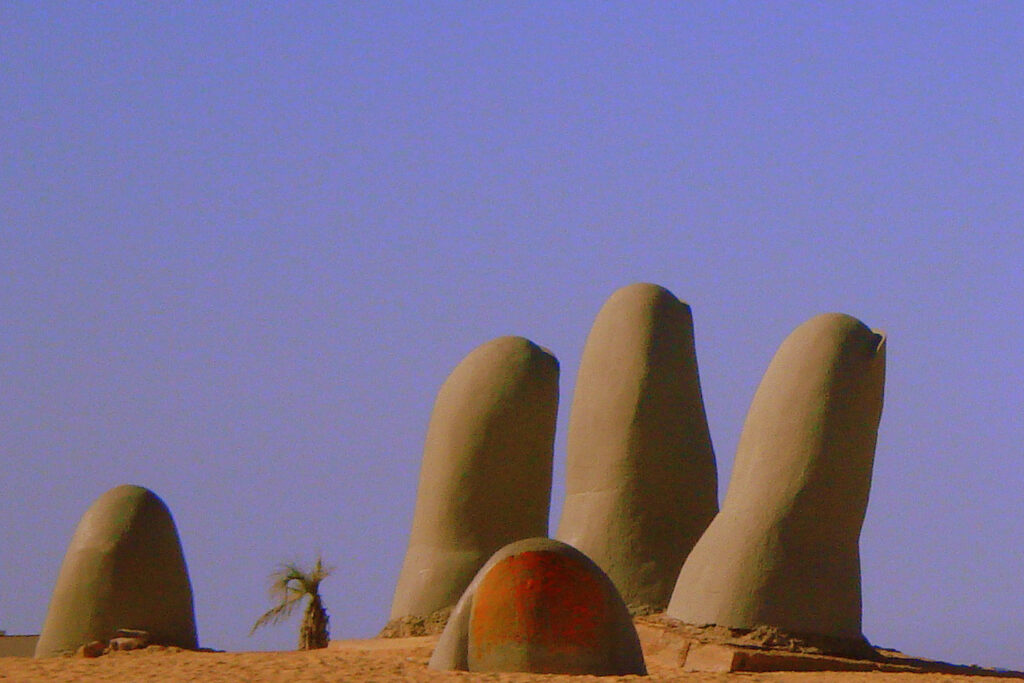Places to visit in Uruguay
Uruguay ranks third among the smallest states in South America. However, a European country like Belgium fits six times in its territory and Portugal, two.
If you travel beyond the cities of Montevideo and Colonia del Sacramento, you’ll discover beautiful beaches, breathtaking countryside and wildlife in their natural habitat. It is a fantastic destination for couples as well as family with kids.
Below you will find the most beautiful places that you should take into account on your trip to Uruguay.

Montevideo
Montevideo is the capital of Uruguay and it is located only 1 hour by plane from Buenos Aires. It is very common for both Argentines and foreigners to fly to Montevideo from Buenos Aires and spend a full day touring the city.
Montevideo, the capital of Uruguay, combines modernity and tradition. La Rambla (River Walk), which gives access to more than 30 km of coastline, is one of the main attractions of Montevideo and an unforgettable walk for its inhabitants who frequently come to drink mate and go for long walks. In addition, the large number of green spaces, parks and gardens also provide numerous outdoor options. Montevideo also has an extensive cultural scene. For example, its theatrical productions are remarkably extensive and varied, including classic, modern, and alternative shows. In its museums, cultural centers and exhibition halls it is possible to appreciate the art of a wide range of internationally recognized artists.
Montevideo also has some excellent open-air markets selling everything from books to jewelry and the occasional antique. The capital also has some excellent art stores displaying the country's vibrant art scene.
TIP: For lunch, head to Mercado del Puerto, (old maket opened in 1868), which is full of restaurants specializing in meats and fish. Try Uruguay’s national sandwich Chivito (Anthony Bourdain’s favorite sandwich). At its core, the chivito contains cheese, a thin steak, and ham on toasted bread. But the sandwich can include all sorts of ingredients, like bacon, lettuce, tomato, and olives. It can now also be ordered without the bun or even without meat.
Punta del Este (The Uruguayan Riviera)
Punta del Este is the epicenter of Uruguay’s beach scene. The city comprises 40 kilometers of coastline, from Portezuelo to Jose Ignacio. The main attraction of Punta del Este are the beautiful beaches, upscale resorts and restaurants with a laid-back vibe and locally sourced menus.
Gorlero Avenue is a shopping street famous for designer label and haute couture fashion. One of the most interesting attractions in Punta del Este is the sculpture in the shape of a hand. It is a landmark in the town and is a mandatory stop to take a selfie and meet friendly locals.
If you seek pristine beaches and good surfing conditions, head to Playa Brava, one of Punta de Este's finest shoreline attractions.

Jose Ignacio
The town of José Ignacio is a sleepy fishing enclave reborn as South American Hamptons. It only has around 200 permanent residents, however, during the summer months (December to early March) this small town comes alive. People come from far and wide to organize parties, enjoy the carnival and see concerts in the lighthouse. However, relaxation is always a priority and many argue that there is no better place in Uruguay to relax.
The most popular restaurant in the area is La Huella. Designed to look and feel like a boathouse, it’s also the hardest table to score in the busy months of January and February. And the best beachfront resort and spa to stay in Jose Ignacio is Playa Vik.
Time magazine chose Jose Ignacio as one of the 100 best destinations of 2021.

Laguna Garzon
On the Uruguayan Atlantic coast and on the border between the departments of Rocha and Maldonado is Laguna Garzón. A place with sandy beaches, wetlands, native forests, minor lagoons and grasslands.
In the past, Uruguay’s interior meant sheep, cows, and very little else. In recent years, however, wealthy Argentines and Brazilians, along with the odd Uruguayan and American, have hired local and international architectural firms to build boxy, Brutalist-inspired dachas with panoramic views overlooking Garzon Lagoon.
You can enjoy good surfing and even kitesurfing at Laguna Garzon. It is also an attractive place to visit during the winter months between July and the end of October, as the weather remains mild. You will share this little paradise with a lot less people and also right whales, which rest on the way to the peninsula of Valdes in Argentina.
Colonia del Sacramento
Just an hour from Buenos Aires by ferry, and two hours from Montevideo by road, the charming Colonia del Sacramento makes for a perfect day trip.
Originally founded by the Portuguese in the 1600s, the city passed between Portuguese and Spanish rule for decades, and the influence of both nations is apparent in the resulting colonial architecture and vibrant streetscapes. Today, visitors come to explore the cobblestone streets of the historic district which is now under UNESCO protection, ensuring it retains its old-world charm.








